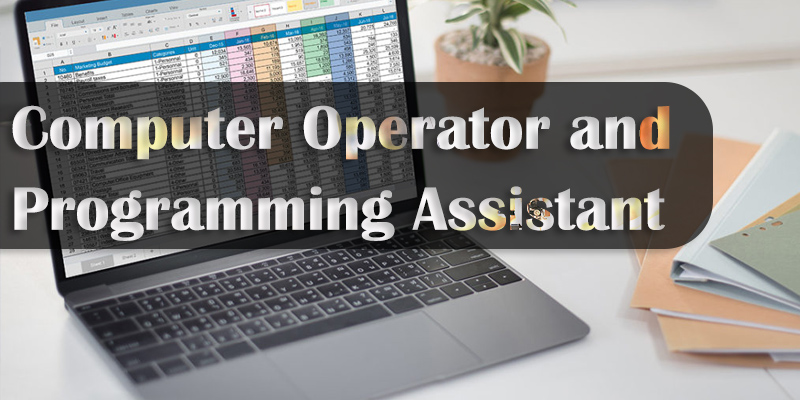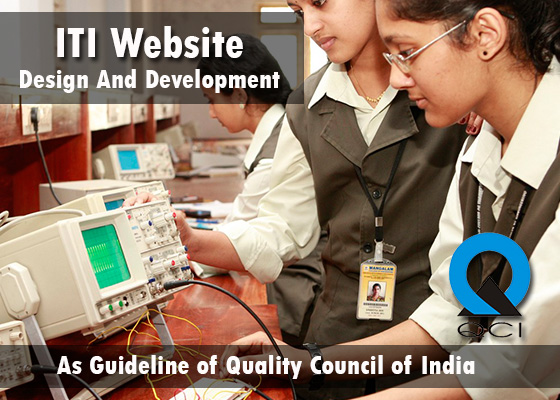Govt. ITI, Kathua Road, Bamial

Govt. ITI, Kathua Road, Bamial is situated in Pathankot Punjab. Govt. ITI, Kathua Road, Bamial is Industrial Training Institute under NCVT Govt. ITI, Kathua Road, Bamial. Location of Govt. ITI, Kathua Road, Bamial is Kathua road, Bamial Pathankot Punjab.
Government ITI
Government ITI is leading educational organisatin in india. Teching facualty of Government ITI is suprimo. ITI is providing latest Job oriened cource for student. This Government ITI is powerd by 'Ministry of Skill Development and Entrepreneurship, Government of India for Craftsmen Training Scheme .
Punjab
The Department of Technical Education & Industrial Training was created on 10.06.1977 in its present form after detaching the Technical Education Wing from the Department of Punjab, P.W.D. (B&R) and detaching the Industrial Training Wing from the Department of industries thereby bringing both the wings under one umbrella though each of these two wings are more than 50 years old.
The Industrial Training Wing of Department of Technical Education and Industrial Training has been entrusted with the responsibility of imparting vocational training in Engineering and non-engineering trades under craftsman training scheme & Applied training scheme to cater the need of the industry in respect of skilled workers. All the Industrial Training Institutes centre work under Craftsman Training Scheme of Government of India, Director - General Employment & Training under the directions of National Council of Vocational Training which is the apex body at Government of India level for coordinating development of Vocational Training in the country. Similar to the National Council for Vocational Training at Central level, State Council for Vocational Training the State level is responsible for coordinating an integrated development of Vocational Training
Reff: https://itipunjab.nic.in/genregsys/Candidate/Default.aspx
Computer Operator and Programming Assistant (COPA)

ITI trade Computer Operator and Programming Assistant (COPA) is powered by NCVT. ITI trade Computer Operator and Programming Assistant (COPA) is a job oriented trade ITI trade Computer Operator and Programming Assistant (COPA) is suitable for government job and private job. This ITI trade Computer Operator and Programming Assistant (COPA) is very powerful for self-empowerment. This ITI trade Computer Operator and Programming Assistant (COPA) is perfectly design to fulfill industrial requirement of Indian Industries as well as International industries.
The individual can work as both Computer Operator/ Programming Assistant; operates computer and peripheral equipment to process business, scientific, engineering, or other data, according to operating instructions. As programming assistant installs, maintains and updates computer programs by making minor changes and adjustments to them under the guidance of computing professionals. Maintains and updates documents of computer programs and installations with assistance under supervision of supervisor
On successful completion of this course the candidates shall be gainfully employed as:
- Computer Operator
- Programming Assistant
Cutting & Sewing (VI)

During the one-year duration of “Cutting & Sewing (For Visually Impaired)” trade, a candidate is trained on Professional Skill, Professional Knowledge and Employability Skill related to job role. In addition to this, a candidate is entrusted to undertake project work, extracurricular activities and on-the-job training to build up confidence. The broad components covered under Professional skill subject are as below:-
The trainees will comply with environment regulation and housekeeping, apply safe working practices. They will able to Identify, select and Make hand stitches in the given fabric. They can Stitch the following using the given fabric: Seams with seam finishes, Darts, Pleats, Tucks, Gathers & Shirrs, Frill, Hem, Casing, Edge Finishing, Neck lines, Placket, Pocket, Collar, Sleeves, Cuff. They will also able to fix the fasteners on the given fabric and also acquire skill of drafting the pattern and sew a Ladies Suits.
The trainees will Take the appropriate body measurement and record the dimension. They can Identify, select the different types of patterns and apply. They will also able to Draft Paper Pattern Making, Cloth cutting and of Ladies wear, kids wear & gents wear.
1 st Semester – In this semester the trainees will comply with environment regulation and housekeeping, apply safe working practices. They will able to Identify, select and Make hand stitches in the given fabric. They can Stitch the following using the given fabric: Seams with seam finishes, Darts, Pleats, Tucks, Gathers & Shirrs, Frill, Hem, Casing, Edge Finishing, Neck lines, Placket, Pocket, Collar, Sleeves, Cuff. They will also able to fix the fasteners on the given fabric and also acquire skill of drafting the pattern and sew a Ladies' Suit.
2 nd Semester – During this semester the trainees will Take the appropriate body measurement and record the dimension. They can Identify, select the different types of patterns and apply. They will also able to Draft Paper Pattern Making, Cloth cutting and of ladies wear, kids wear & gents wear.
TRAINING SYSTEM
The Directorate General of Training (DGT) under Ministry of Skill Development & Entrepreneurship offers a range of vocational training courses catering to the need of different sectors of the economy/ labour market. The vocational training programs are delivered under the aegis of Directorate General of Training (DGT). Craftsman Training Scheme (CTS) with variants and Apprenticeship Training Scheme (ATS) are two pioneer programs of DGT for propagating vocational training.
‘Cutting & Sewing (For Visually Impaired)’ trade under CTS is one of the popular courses delivered nationwide through a network of ITIs. The course is of one year duration. It mainly consists of Domain area and Core area. The Domain area (Trade Theory & Practical)imparts professional skills and knowledge, while the core area (Employability Skill) imparts requisite core skills, knowledge, and life skills. After passing out the training program, the trainee is awarded National Trade Certificate (NTC) by DGT which is recognized worldwide.
Candidates broadly need to demonstrate that they are able to:
- Read & interpret technical parameters/documentation, identify necessary materials and tools.
- Perform task with due consideration to safety rules, accident prevention regulations and environmental protection stipulations;
- Apply professional knowledge & employability skills while performing the job.
JOB ROLE
Tailor, General; makes ladies and gents' garments and children's clothes by stitching various components together according to pattern, by hand or sewing machine. Measures customers for size with inch-tape and record measurements for making garments. Cuts material according to pattern and size and assembles garment parts by sewing. Fits stitched garment on customer, marks alterations to be made and finishes garments. May prepare new designs and Masden Lays and supervise sewing, stitching, button holing, etc. delegated to other workers. May also repair and renovate garments.
Cutter, Hand (Textile Product); cuts garment parts and other articles to be sewed together from cloth, canvas, etc., using scissors. Spreads single or multiple layers of cloth, fabric or other material to be cut on table or board. Places pattern on material in such position as to have least wastage. Marks outline on material with chalk. Cuts along outline marked in chalk or around edge of pattern using scissors
LEARNING OUTCOME
Learning outcomes are a reflection of total competencies of a trainee and assessment will be carried out as per the assessment criteria.
- 1. Identify, select and Make hand stitches in the given fabric following safety precautions.
- 2. Stitch the following using the given fabric: Seams with seam finishes, Darts, Pleats, Tucks, Gathers & Shirrs, Frill, Hem, Casing, Edge Finishing, Neck lines, Placket, Pocket, Collar, Sleeves, Cuff.
- 3. Fix the fasteners on the given fabric.
- 4. Draft the pattern and sew a Ladies' Suit.
- 5. Take the appropriate body measurement and record the dimension.
- 6. Identify, select the different types of patterns and apply.
- 7. Draft Paper Pattern Making, Cloth cutting of ladies’ wear.
- 8. Draft Paper Pattern Making, Cloth cutting of Kids wear.
- 9. Draft Paper Pattern Making, Cloth cutting of Gents wear.
Note
- It will be the responsibility of Training Centre to impart training in addition to curriculum like Orientation, Mobility, Activities of Daily Living, total communication, use of assistive devices, adaptations for barrier free environment like staircase, lift sign board, ramp, instruments, psychology, sociology of behaviour and technology.
- Visually Impaired and other such Disabilities requiring support should be provided Writer (one standard below Trade Entry Level) during examination and given 30 Minutes more than the prescribed time. Please update trainer knowledge for advance techniques and treatment. All material should be in proper quality and quantity. For practical, chart with process must be required.
Electrician

ITI trade Electrician is powered by NCVT. ITI trade Electrician is a job oriented trade ITI trade Electrician is suitable for government job and private job. This ITI trade Electrician is very powerful for self-empowerment. This ITI trade Electrician is perfectly design to fulfill industrial requirement of Indian Industries as well as International industries.
- Electricians have a wide scope of Employability ranging from self-employment, contractual employment to Industrial jobs.
- After successful completion of this course, Electricians can aspire to become Electrical Contractors by acquiring the ‘B” licence from the Electrical Licence Board.
- They can set up their own Rewinding and servicing of Domestic Equipment shop.
- Job opportunities are wide open in Defence, Railways, Transport, Ship Building, Electricity Board, various Industries etc
- They can also go for further higher studies after successful completion of course.
- Students who have completed this course have found employment in the following areas:
- Service/Maintenance Technician for domestic appliances in Reputed Companies
- Winder of Electrical Motors in winding shop
- Contractor for domestic wiring and industrial wiring
- Armature winder of Electrical fans and motors
- Electrical appliance repair in electrical shops
- Indian Railway (Asst. Driver, Tech. Gr. III, Appr. Technician)
- Local Electricity Board
- Assembler of Electrical control Gears
- Telephone Department
- Installation and Testing division of Auditorium and Cinema Hall
- Factories
- As Instructor in Govt./Private ITI/ITC
- Merchant Navy
- Indian Air Force
- Self-Employment in Service Centre
Electronics Mechanic

ITI trade Electronics Mechanic is powered by NCVT. ITI trade Electronics Mechanic is a job oriented trade ITI trade Electronics Mechanic is suitable for government job and private job. This ITI trade Electronics Mechanic is very powerful for self-empowerment. This ITI trade Electronics Mechanic is perfectly design to fulfill industrial requirement of Indian Industries as well as International industries.
Brief description of job roles:
Electronics Fitter, General fits, assembles and repairs various kinds of electronic equipment in factory or workshop or at place of use. Examines drawings and wiring diagrams; checks parts for accuracy of fit and minor adjustments; assembles parts or mounts them on chassis or panels with aid of hand tools; installs and connects wiring, soldering joints equipment, diagnoses faults with aid of electronic testing equipment; dismantles equipment if required and replaces faulty parts or wiring.
Electronics Fitter, other include all other workers engaged in fitting, assembling, repairing and maintaining electronic equipment, machinery, appliances, etc., not elsewhere classified.
Electronics Mechanic; Electronic Equipment Mechanic repairs electronic equipment, such as computers, industrial controls, transmitters, and telemetering control systems following blueprints and manufacturer's specifications and using hand tools and test instruments. Tests faulty equipment and applies knowledge of functional operation of electronic units and systems to diagnose cause of malfunction. Tests electronic components and circuits to locate defects, using instruments, such as oscilloscopes, signal generators, ammeters and voltmeters. Replaces defective components and wiring and adjusts mechanical parts, using hand tools and soldering iron. Aligns, adjusts and calibrates testing instruments. Maintains records of repairs, calibrations and test.
Radio Technician (Radio Manufacturing) tests assembled radio sets with testing equipment to ensure that assembly soldering, frequency, performance, etc. are in accordance with prescribed standards. Places assembled radio set in position and visually examines it to ensure that position of components, connections, soldering, wiring, etc. are in order. Switches on and operates different knobs to check calibration, audibility and general performance of set by varying its tone and listening to various stations and frequencies. Tightens loose nuts and screws, locates faults, replaces defective components and conducts necessary changes. Approves correctly assembled sets for further processing and rejects defective ones for rectification. May tests sets at different stages of assembly. May service, repair and overhaul radio sets.
Solar Panel Installation Technician is also known as ‘Panel Installer’, the Solar Panel Installation Technician is responsible for installing solar panels at the customers’ premises. The individual at work checks the installation site, understands the layout requirement as per design, assesses precautionary measures to be taken, installs the solar panel as per customer’s requirement and ensures effective functioning of the system post installation.
Optical fibre technician is responsible for maintaining uptime and quality of the network segment (both optical media and equipment) assigned to him by undertaking periodic preventive maintenance activities and ensuring effective fault management in case of fault occurrence. He is also required to coordinate activities for installation and commissioning of Optical Fibre Cable (OF) as per the route plan.
Field Technician: UPS and Inverter is also called, ‘UPS repair Technician’, this is an after sales service job for installing and providing support to customers of different types of UPS and inverters. The individual at work installs the newly purchased UPS or inverter. The individual also and interacts with customers to diagnose problems in them, assesses possible causes, rectifies faults or replaces faulty modules or recommends factory repairs for bigger faults as per the route plan. Installation, service, repair and overhaul radio sets service centre. May install television sets.
Television Installation Man installs and adjusts television receivers and antennas, using hand tools. Selects antenna according to type of set and location of transmitting station. Bolts cross arms and dipole elements in position to assemble antenna. Secures antenna in place with bracket and guy wires, observing insurance codes and local ordinances to protect installation from lighting and other hazards. Drills and waterproofs holes in building to make passage for transmission line. Connects line between receiver and antenna and fastens it in place. Tunes receiver on all channels and adjusts screws to obtain desired density, linearity, focus and size of picture. Orients antenna and installs reflector to obtain strongest possible reception.
Cable Television Installer installs cable television cables and equipment on customer's premises, using electrician's tools and test equipment: Measures television signal strength at utility pole, using electronic test equipment. Computes impedance of wire from pole to house to determine additional resistance needed for reducing signal to desired level. Installs terminal boxes and strings lead-in wires, using electrician's tools. Connects television set to cable system and evaluates incoming signal. Adjusts and repairs cable system to ensure optimum reception. May collect installation fees and explain cable service operation to subscriber. May clean and maintain tools, test equipment.
Television Service and Repairman repairs and adjusts radios and television receivers, using hand tools and electronic testing instruments. Tunes receiver on all channels and observes audio and video characteristics to locate source of trouble. Adjusts controls to obtain desired density, linearity, focus and size of picture. Examines chassis for defects. Tests voltages and resistance of circuits to isolate defect following schematic diagram and using voltmeter, oscilloscope, signal generator and other electronic testing instruments. Tests and changes tubes, solders loose connections and repairs or replaces defective parts, using hand tools and soldering iron. Repair radios and other audio equipment.
Television Repair Technician job role is applicable to both Television manufacturing facilities as well as electronics service centres. This role pertains to rectify faults identified during testing of TV on in manufacturing process and providing after sales assistance and ensuring appropriate functioning of television sets. A TV repair technician identifies the section in the TV that is not functioning. If the problem identified is in the Printed Circuit Board (PCB), the technician identifies the specific fault in the PCB and corrects it. Replaces the dysfunctional PCB with a new one, if the damage identified requires fixing at the service centre.
Plan and organize assigned work and detect & resolve issues during execution. Demonstrate possible solutions and agree tasks within the team. Communicate with required clarity and understand technical English. Sensitive to environment, self-learning and productivity.
Information Communication Technology System Maintenance

ITI trade Information Communication Technology System Maintenance is powered by NCVT. ITI trade Information Communication Technology System Maintenance is a job oriented trade ITI trade Information Communication Technology System Maintenance is suitable for government job and private job. This ITI trade Information Communication Technology System Maintenance is very powerful for self-empowerment. This ITI trade Information Communication Technology System Maintenance is perfectly design to fulfill industrial requirement of Indian Industries as well as International industries.
Provides technical support and maintains computer systems, desktops, networks and peripherals. Installs, diagnoses, repairs, maintains and upgrades all hardware/ software/ related equipments while ensuring optimal workstation performance by taking appropriate security measures. Troubleshoots problem areas in a timely and accurate fashion and provide end user training and assistance whenever required. Configure broadband equipment. Assist the information technology administrators with configuration, maintenance and monitoring of access servers, routers, Internet servers including DNS, radius, web, LDAP, e-mail, network monitoring and print servers
Information & Communication Technology System Maintenance has a wide scope of Employability ranging from self-employment, contractual employment to Industrial jobs. On successful completion of this course, the candidates shall be gainfully employed in the industries for following occupations:
- ICT Engineer
- ICT Technician
- Computer System Hardware Analyst/Hardware Engineer
- System Analysts
- Data Communication Analyst/Network Administrator
Sewing Technology

ITI trade Sewing Technology is powered by NCVT. ITI trade Sewing Technology is a job oriented trade ITI trade Sewing Technology is suitable for government job and private job. This ITI trade Sewing Technology is very powerful for self-empowerment. This ITI trade Sewing Technology is perfectly design to fulfill industrial requirement of Indian Industries as well as International industries.
A trainee of the course ‘Sewing Technology’ constructs Sari Petticoat, Ladies’ Top/Short Kurthies, Ladies’ Suit, Nightwear (One Piece with Yoke), Nightwear (Two Piece – Night suit), Sari Blouse (Simple Model - Plain), Dress for a Newborn (Jhabla), Dress for a Toddler (Sun Suit), Dress for Kids (Frock), Dress for Kids (Frock), Gent’s, Casual Shirt, and Gent’s Trousers, according the sketched designs. The trainee also practices, maintains and troubleshoots basic sewing machines and over-lock machines. The course is meant for a trainee who aspires to become a Sewing Machine operator, Assistant to Designer, Assistant worker in Boutique, Assistant to Sample Garment Designer and Assistant to Garment Sample Coordinator
The qualification gives access to jobs such as Sewing Machine operator, Assistant to Designer, Assistant worker in Boutique, Assistant to Sample Garment Designer and Assistant to Garment Sample Coordinator
Surface Ornamentation Techniques (Embroidery)

ITI trade Surface Ornamentation Techniques (Embroidery) is powered by NCVT. ITI trade Surface Ornamentation Techniques (Embroidery) is a job oriented trade ITI trade Surface Ornamentation Techniques (Embroidery) is suitable for government job and private job. This ITI trade Surface Ornamentation Techniques (Embroidery) is very powerful for self-empowerment. This ITI trade Surface Ornamentation Techniques (Embroidery) is perfectly design to fulfill industrial requirement of Indian Industries as well as International industries.
A trainee of the course ‘Surface Ornamentation Techniques (Embroidary)’ carries out typical embroidery works such as Drawn and Pulled Thread, Assisi, Cut, Swiss, and Shadow, and traditional embroidery works such as Phulkari, Kantha, Kasuti, Chikankari, Kashida, Chamba, and Kutch. The trainee also prepares fancy nets such as Cane weaving, Fancy net with Lazy Daisy, Fancy net with Cross Stitch, Fancy net with Circles, and Button hole net and carries out Appliqué work such as Simple Appliqué, Cut Appliqué, and Felt Appliqué. The course is meant for the candidates who aspire to become Tracing experts, Hand Embroider, Zig-Zag Machine Operator, Aari Embroider, Motif Maker, Entrepreneur & Design Coordinate to Fashion Designer
The qualification gives access to jobs such as Tracing experts, Hand Embroider, Zig-Zag Machine Operator, Aari Embroider, Motif Maker, Entrepreneur & Design Coordinate to Fashion Designer
JOB ROLES
This course is meant for the candidates who aspire to become Tracing experts, Hand Embroider, ZigZag Machine Operator, Aari Embroider, Motif Maker, Entrepreneur & Design Coordinate to Fashion Designer.
Welder

ITI trade Welder is powered by NCVT. ITI trade Welder is a job oriented trade ITI trade Welder is suitable for government job and private job. This ITI trade Welder is very powerful for self-empowerment. This ITI trade Welder is perfectly design to fulfill industrial requirement of Indian Industries as well as International industries.
Gas welding (includes gas cutting), Arc welding, TIG welding, MIG/MAG welding etc
ITI Student Resume Portal
रिज्यूम पोर्टल का मुख्य उद्देश्य योग्य छात्रों की जानकारी सार्वजनिक पटल पर लाने की है जिससे जिन्हें आवश्यकता हो वह अपने सुविधा अनुसार छात्रों का चयन कर सकते हैं




